ANIMAFEST SCANNER XII
Symposium for Contemporary Animation Studies
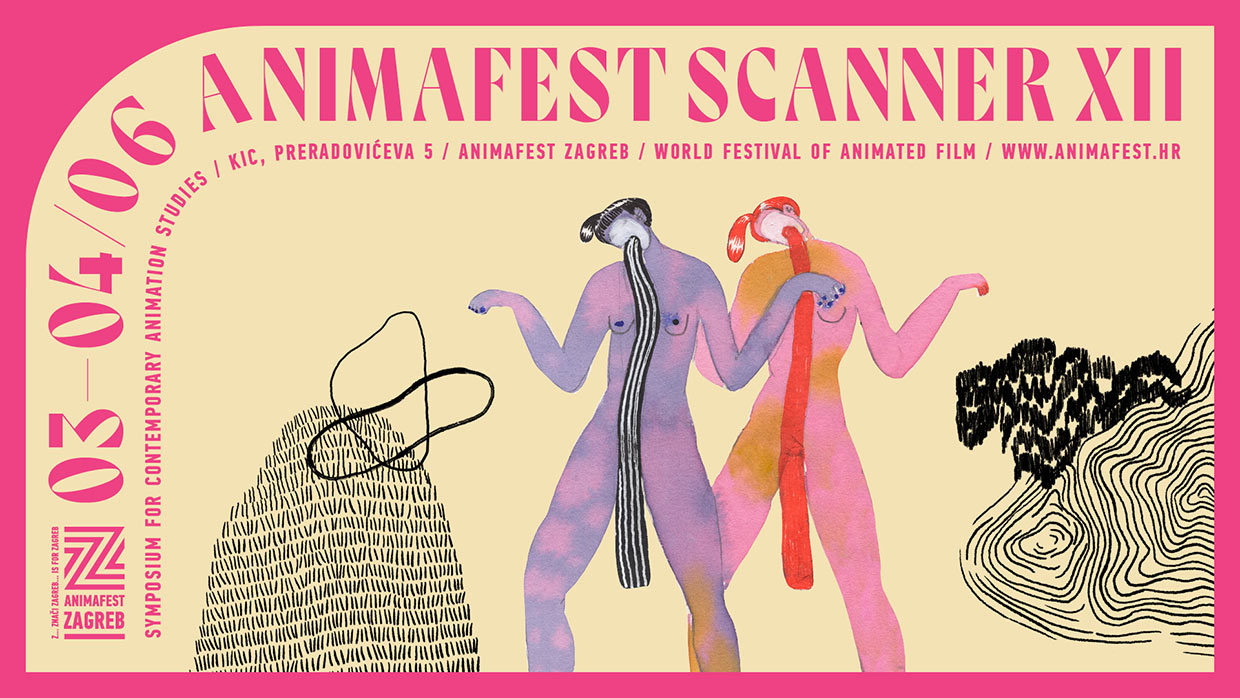
The 12th edition of the Symposium for Contemporary Animation Studies Animafest Scanner XII aims again to create synergy of theoretical and practical discourses, and stimulate exchange between filmmakers and scholars. As the worldwide animation studies have been rapidly growing and evolving in recent years, catching up with the expanding field of animated films, Animafest Scanner symposium is again at the frontline of the discourse and the interaction of theoretical and practical approaches to animation.
The symposium takes place during and is part of the World Festival of Animated Film – Animafest Zagreb. Over the course of its fifty-three-years history, the festival has given a stage to different animation forms and formats in competition and non-competition environments, presenting a worldwide selection of auteur, experimental and mainstream animated films in various programs.
This year the speakers will focus on the following subjects: Exploring Animation in Ephemeral Films, Current Technological Developments in Animation, Achievements of the Line, Violence in Animated Film.
In English, open to public.
03/06 TUESDAY
09:30 Welcome & Introduction
PANEL 1 – EXPLORING ANIMATION IN EPHEMERAL FILMS
Moderator: Nikica Gilić
PANEL 2 – CURRENT TECHNOLOGICAL DEVELOPMENTS IN ANIMATION
Moderator: Franziska Proksa
04/06 WEDNESDAY
09:45 Welcome & Introduction
PANEL 3 – ACHIEVEMENTS OF THE LINE
Moderator: Andrijana Ružić
PANEL 4 – VIOLENCE IN ANIMATED FILM
Moderator: Holger Lang
PRESENTERS
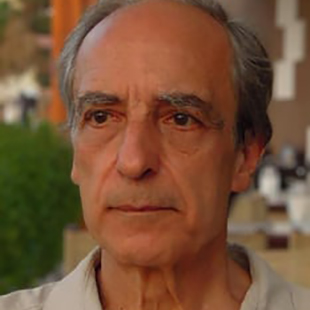
GEORGES SIFIANOS
KEYNOTE: Animation and Ecology. From Phidias to Norman McLaren
When discussing ecology and animation, the first thought that comes to mind is the thematic aspect, the subjects of the films. A second reflection focuses on the cost of production: the consumption of paper (and thus trees), the energy used by computers and data centers, air travel for co-productions, etc. Would questioning the industrial fabrication of serialized narratives not also be a legitimate approach? The promotion of endless waiting, suspending the resolution of an episode’s action until the next, and the deliberate addiction provoked by video games or the scrolling of social media, do they not teach us to constantly escape forward? And isn’t this attitude at the root of ecological disruption?
If the ideology of “always more” might have been acceptable in a world of infinite resources, today we consume more than this Earth can regenerate. The model of endless growth is therefore no longer sustainable. In McLaren’s famous statement, “What happens between each frame is much more important than what exists on each frame,” a different, a relational approach emerges, one reminiscent of Eisenstein’s “conflict of attractions.” Meaning, here, results from the dialectical confrontation of images, as illustrated by the changing expressions on the impassive face of Mosjoukine.
McLaren highlights the implicit connections between images that create animation. Antiquity, which believed in the harmony of the cosmos and rejected excess, proposed a similar model of dialectical interaction, where a thesis opposed an antithesis before resolving in a synthesis. This model of interdependence in the production of meaning can be found in the analysis of actions (animations!) observable in the Parthenon frieze and elsewhere. Don’t these relational attitudes align with the dialectics advocated by ecology?
born in Greece, holds a doctorate in philosophy and is an emeritus professor of animation at EnsAD. He is interested in the aesthetics of animation cinema, cognitive sciences, artificial intelligence and has taught at universities in Europe, India, Korea, Japan, and China. His recent research focuses on forms of animation found on the Parthenon frieze. His book Aesthetics of Animated Cinema received the “McLaren – Lambart” award in 2014 and the “Hemingway” grand in 2015.
Filmography:
Animated Shorts: “SMILE” (1974), “SCENT OF THE CITY” (1994), “TUTU” (2001), “IT’S ME” (2007), “THE BLIND WRITER” (2021). Documentary Feature Film: “PETROCHEMICALS, THE DESERT CATHEDRALS” (1981)

KRISTINA SCHMIEDL (Austria)
Animation in Title Sequences of Austrian Broadcasting Productions from 1960 to 1989
Intro sequences, referred to as signations by the Austrian Broadcasting Corporation (Österreichischer Rundfunk, ORF) for their television programs, played a crucial role in shaping the audience expectations and defining Austrian television’s visual identity. Despite their cultural significance, little is known about their production, aesthetics, and the technology employed. A ‘signation’ describes a title sequence or intro at the beginning of a television program, series, or movie (Kauz & Weibel, 2021), serving to prepare the viewers for the upcoming program, and enhancing recognition value (Putz, 2023). Many signations include animation.
This study examines various animations in ORF signations from 1960 to 1989, identifies key animators and their influences and role models, documents technical equipment such as the Grass camera rostrum and the Quantel Paintbox, and explores analog and digital production methods used by the ORF graphics department. A corpus analysis and individual case studies of ORF signations shed light on the intros’ production process, style and aesthetics of the signations, and animation techniques such as limited cel or cutout animation.
Additionally, a literature review and a qualitative interview with two former ORF graphics department members provided valuable insights into the available technology, production process, and the challenges of adopting new technologies and aesthetics. Addressing a previously unexplored research gap, this study falls within the field of animation research in ephemeral film and investigates the aesthetics and creation processes of animation in ORF signations. Furthermore, it situates these intros within a broader context by analyzing their aesthetic influences and comparing the technology used with global advancements in animation production. Kauz, M., & Weibel, B. (2021). Assoziative Filmsprache: Unsagbares in Bild und Ton erzählen. Herbert von Halem Verlag. Putz, P. (2023, October 15). Revisiting ORF – Besuch in meiner früheren Arbeitsstätte.
Das Ewige Archiv – The Eternal Archives. https://ewigesarchiv.at/revisiting-orf-besuch-in-meiner-frueheren-arbeitsstaette/
Kristina Schmiedl, Dipl. Ing., BSc (born 2001), is a Junior Researcher at the University of Applied Sciences St. Pölten, Austria. She studied Animation and Visual Effects at the same university and researches animation studies and historical ephemeral film. Her work focuses on animation in Austrian ephemeral films and title sequences of the Austrian Broadcasting Corporation (Österreichischer Rundfunk, ORF). She is developing publications in her field and is part of the collaborative research project ‘AniVision’ [I 5592-G] between the University of Applied Sciences St. Pölten, Austria, and the University of Tübingen, Germany, which examines animations in ephemeral films from Austria, East Germany, and West Germany between 1945 and 1989.
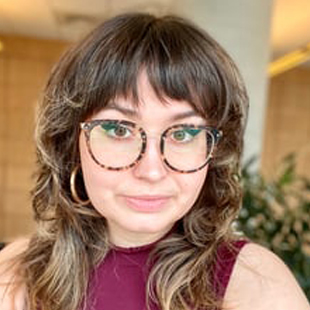
AURÉLIE PETIT (Canada)
Using AI for Animation Historiography: A Speculative Visual Index
A Speculative Visual Index is a research-driven exploration that revisits the lost animated film Black Pudding (1969) by Nancy Edell, a pioneer in feminist animation. Made in the late 1960s during her studies at Bristol University (UK), Black Pudding is one the oldest known animated representations of sexual imagery by a woman. It was made ten years before Asparagus (Suzan Pitt, 1979), often cited as an early example of feminist explicit animation. Although at the time of its release, many adult-oriented animated films were produced across Europe, many of them are now considered lost. Likewise, Black Pudding is considered a lost media as copies of the film are no longer available, exemplifying the lack of film preservation for 1) adult animated films, 2) feminist media made by women, and 3) experimental films that exist outside of traditional film institutions. While we do not have access to Black Pudding today, many did in the past. Thanks to this, we know at least some information about the film such as short summaries and descriptions by academics and film critics.
The purpose of Black Pudding: A Speculative Visual Index is to create a platform that 1) highlights the existence of Black Pudding as a foundational feminist animated media, 2) makes accessible resources and literature about the film, and 3) creates a speculative visual index to interrogate the limits and potentials of Generative AI to restore, build, recover lost feminist media. The “disappearance” of Black Pudding is the method to explore both the (un)history of pornographic animation and the new creative AI tools seizing its industry. This project takes those surviving textual media as prompts to investigate the ethical and creative boundaries of generative AI in recreating feminist sexual representations: how would contemporary AI porn content-generators represent Black Pudding in 2024?
Aurélie Petit is a PhD Candidate in the Film Studies department at Concordia University, Montréal. She specializes in the intersection of technology and animation, with a focus on gender and sexuality. As a visual and social researcher, she researches the ethics of non-realistic visual sex media. She is the current Guest Editor of Porn Studies’ special issue on Artificial Intelligence, Pornography, and Sex Work. Before that, she was a Doctoral Fellow in AI and Inclusion at the AI + Society Initiative (University of Ottawa) and a PhD research intern at the Social Media Collective (Microsoft Research).
Website: www.aurelie-petit.com
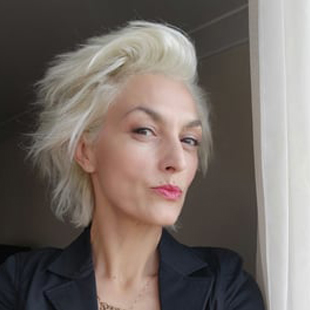
ANDRIJANA RUŽIĆ (Italy)
From Animating Puppets to the Essence of the Line – Two Milestones in Osvaldo Cavandoli’s Career in Animation Advertising
The irascible, yet endearing, big-nosed little man known as La Linea is globally familiar. He is not only part of Italian heritage, but he also belongs to all of us, due to his universality. His vicissitudes strike a chord with everyone, making us laugh heartily, which is the most difficult thing there is: making people laugh. Laughing at him, we laugh at ourselves, at our weaknesses that we recognise as his, at our failures that are also his. La Linea is the protagonist of a series of animated shorts, created in the late 1960s for Italian public television (RAI) and animated by Osvaldo Cavandoli, the Italian director who passed away in 2007. La Linea is reborn each time from a white line, and on it, he lives his adventures in two minutes and thirty seconds. But to arrive at the essential trait of a simple white drawn line of La Linea, the Milanese director accumulated many years of experience in the Italian animation industry, from classic Disney-style animation to stop-motion animation.
In addition to a brief outline of Osvaldo Cavandoli’s career trajectory, this paper intends to focus more specifically on his activity in the field of producing advertising shorts for cinema circuits in his Milanese studio called Pupilandia. Cavandoli directed thirteen puppet commercial films, almost a one-man show, in the period from 1950 to 1957: these were the result of pure craftsmanship. However, at the beginning of 1957, the entire Italian territory was covered by the television signal, and advertising consequently shifted to a specific container, an Italian advertising television programme called Carosello (1957 – 1977). This event also marked the closure of the Pupilandia studio in that same year. Laborious and expensive to make, Osvaldo’s short commercials would have difficulty finding new markets, as the demand from cinemas was diminishing. In my presentation, a couple of advertising films produced in the Pupilandia studio, rarely seen elsewhere, will be screened.
Andrijana Ružić graduated in History and Criticism of Art at the Università degli Studi in Milan, Italy, specializing in History of Animated Film under Giannalberto Bendazzi’s mentorship. As an independent scholar, she has participated in numerous international conferences for animation studies, presenting works of diverse independent authors of animation, and has served as a juror and a film selector on international animation festivals. In the period from 2012 to 2019, she has been a film programmer of the animated film section at the International Comics Festival in Belgrade, Serbia. She is a member of the Selection board of Animafest Scanner, the international symposium for contemporary animation studies held annually at the International Festival of Animated Film (Animafest) in Zagreb, Croatia. She writes about animation and other arts for Belgrade weekly magazine Vreme, Croatian film magazine Hrvatski filmski ljetopis, and French animation magazine Blinkblank, and is the author of the book Michael Dudok de Wit – A Life in Animation (CRC Focus).
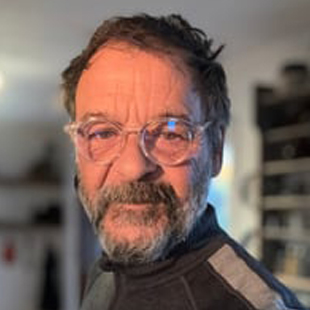
FRANÇOIS GIARD (Canada)
Human Creativity Powered by Generative Artificial Intelligence (or Thought Without Gesture)
This research explores the integration of generative artificial intelligence (GAI) in animated film production, examining its technological, philosophical, aesthetic, and ethical implications. By challenging the long-held notion of creativity as an exclusively human trait, this study investigates the transformative role of AI in redefining authorship and artistic processes.
Our methodology consists of three key approaches: 1. A comprehensive mapping of AI technologies across all stages of film production. 2. Practical experimentation leading to the creation of an experimental animated film and the development of a university course. 3. A retroactive analysis of findings to refine our understanding of AI’s role in creative fields. A central focus is the negative bias towards AI in creative disciplines, which echoes historical skepticism towards past technological disruptions, such as photography (Baudelaire). This phenomenon is analyzed through Freud’s concept of humanity’s “narcissistic wounds”, positioning AI as a potential fifth disruption to human self-perception—challenging the idea of creativity as an innately human domain. Our case study, The First Image of the World, employs a metacinematic approach to interrogate the relationship between AI, image, and consciousness. This experimental docufiction digitally resurrects philosophers such as Kant, Simondon, and McLuhan through AI-driven processes, including text synthesis, voice reconstruction, and visual animation. Unlike traditional CGI, GAI does not merely simulate movement and form but generates dynamic discourse and nuanced behavioral expression, creating an almost interactive presence. The study highlights AI’s potential to democratize film production, redefine the filmmaker’s role, and shift artistic value from technical mastery to conceptual depth. However, it also raises ethical concerns regarding authenticity, authorship, and the evolving boundaries of creative agency in the AI era. Award-winning at multiple international film festivals, our research underscores the urgency of rethinking creativity in the face of AI’s growing capabilities.
François Giard, PhD, Professor at Université Laval’s School of Design, combines academic research with industry expertise. His teaching career began at Université du Québec (1990-1994), where he pioneered courses in numeric and interactive art. After nine years as a 3D specialist at Softimage developing technical documentation and conducting specialized workshops internationally, he gained valuable industry experience at Big Film and Ubisoft, where he led FX for the Prince of Persia cinematics team. His current research explores the intersection of artificial intelligence and artistic creation, culminating in his award-winning experimental film “The First Image of the World,” which examines AI’s philosophical and practical implications for creative processes while earning significant recognition at international film festivals since January 2025.
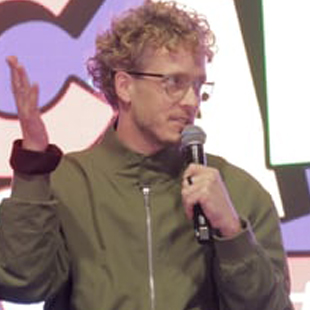
MAX HATTLER (Hong Kong)
Abstract and Experimental Animation with Generative AI
This presentation discusses the findings of the Teaching Development Grant project Abstract Animation with Generative AI, which integrates generative artificial intelligence tools into the course Abstract and Experimental Animation taught by Max Hattler at City University of Hong Kong. The project investigates the pedagogical potential of generative AI in fostering creativity and interdisciplinary research in experimental animation. By employing tools such as Midjourney, Kling AI and DreamStudio in combination with traditional animation software like Procreate and Adobe After Effects, students created experimental animation films through playful yet mindful artistic exploration. The project emphasised AI’s role as “found footage” and creative collaborator, and challenged students to harness these tools without undermining their own creativity. Adopting an exploratory learning approach, students were encouraged to approach generative AI as a source material as part of an experimental animation practice. Participants produced a number of abstract and experimental animation films, which were showcased in a public screening in Hong Kong and subsequently submitted to international film festivals. The project revealed that the integration of AI tools can enhance students’ ability to iterate and develop experimental animation projects, and motivate them to think as artist-researchers contributing to the global experimental media arts field. Workflows which integrate generative AI, when guided by critical and reflective pedagogy, can expand the boundaries of abstract and experimental animation, offering students transferable skills relevant to both artistic practice and the animation industry.
Max Hattler is a German animation artist, researcher, curator and educator, who works with abstract, experimental and expanded animation. He holds an MA in Animation from the Royal College of Art, and a Doctorate in Fine Art from the University of East London. Hattler’s films have been screened and awarded at festivals and exhibitions worldwide. He has published articles in journals including Convergence, Visual Communication, and Punctum. Hattler serves on the board of directors of the iotaCenter and the editorial boards of Animation: An Interdisciplinary Journal and Animation Practice, Process & Production. Since 2015, he has been living in Hong Kong, where he is a Professor at City University of Hong Kong. In 2017, he co-founded Relentless Melt, a Hong Kong-based society which regularly holds screenings of experimental animation in Hong Kong and around the world.

JIU ZI, TONGLE SUN (China)
Research on the Creation of Vertical Shot Animation
The popularity of smartphones has made short videos a global phenomenon. It has also provided a more convenient medium for the dissemination of animation. Correspondingly, to adapt to the vertical display format and fragmented viewing habits, vertical short animation has emerged. However, vertical animation is not merely about changing the format of traditional animation from horizontal to vertical. Elements such as composition, shot language, and narrative rhythm must also be adjusted to suit the viewing characteristics of vertical screens. Therefore, this article aims to explore the creation of vertical short animation for smartphone media, including: Which composition and shot language are best suited for vertical screens? What unique advantages does the vertical format offer? and other aspects to optimize the production of vertical short animations.
Jiu Zi obtained her PhD in Animation Art from Communication University of China in 2021 and joined the post-doctoral workstation at Tsinghua University, where she completed her research in 2023. Currently serves as the Academic Director at ASIFA-CHINA. Her research primarily focuses on animation history and new media animation. She published multiple academic papers and produced diverse creative works, including 3D animations, stop-motion animations, children’s picture books, and educational games for children.
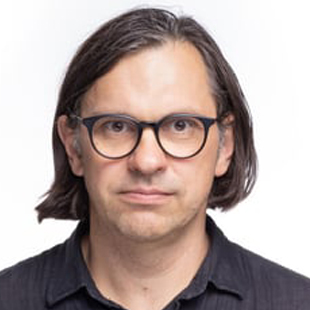
EDMUNDS JANSONS (Latvia)
The Representation of Water in Latvian Animated Films: Technological and Aesthetic Aspects
The rapid advancement of digital technologies has significantly influenced the creative processes of both animation production and individual authors, leading to transformations in film aesthetics. “The Representation of Water in Latvian Animated Films: Technological and Aesthetic Aspects” is an excerpt from a broader study analyzing the last 30 years of Latvian animation history—a period marked by radical shifts in filmmaking. This era saw a transition from analog to digital cinema, the decline of large-scale film studios, and the rise of small independent studios and individual creators. The study examines these developments within the continuum of technological progress. Water, as an element in animated films, presents both creative and technological challenges. Its representation involves depicting its fluid nature, constant variability, and the complex interaction of light and textures in motion. Depending on the chosen animation technique and intended meaning, different approaches to representing water can be identified: Material water animation – the use of unconventional materials such as rotating papier-mâché rollers, felt, glass, and watercolor on film to depict water. Stylized water animation – visually experimental techniques where water is represented symbolically or abstractly rather than realistically. Digital water simulations – the use of physics-based modeling to create plausible water motion. Notably, the imagery of the sea and water is a recurring motif in the works of nearly all Latvian animation artists. From the underwater world illustrated by Roze Stiebra and Ansis Bērziņš in Latvia’s first animated feature film “Ness and Nesija”, to the rotating papier-mâché cylinder sea in Arnolds Burovs “Vanadzins”, and further to the contemporary digital ocean in Gints Zilbalodis’ Flow, created using the Physical Open Waters real-time simulator addon for Blender. These works provide not only a panoramic view of Latvian animation but also a sequential representation of technological advancements in media art, reflecting broader global trends.
Edmunds Jansons (1972) is animator, director, illustrator and founder of the animation film studio Atom Art. He studied TV directing at Latvian Academy of Culture, graduated MA at Estonian Academy of Art – the masterclass by Priit Pärn in 2012. In 2024 he finished professional doctoral studies in Art Academy of Latvia. His filmography notably includes the animated documentary film Little Bird’s Diary (2007); the animated shorts Choir Tour (2012), The Isle of Seals (2014), Guard of Honour (2021), Freeride in C (2024), pre-school series Shammies, and 25-min Christmas story Pigtail and Mr. Sleeplessness. Jacob, Mimmi and the Talking Dogs (2019) is his first feature film and currently he is working on his next feature “Born in the jungle”. Since 2013, Edmunds has been teaching animation directing at the Academy of Arts of Latvia. In addition to his main line of work, Edmunds is a recognized and beloved children’s book illustrator.
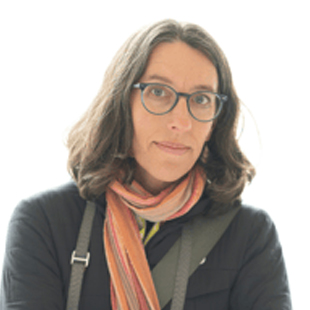
CORRIE FRANCIS PARKS (USA)
The Line in the Sand
This presentation ponders the dimensional qualities of sand animation with a focus on linear manifestations. In creating lines in the sand, the animator attempts not just to replicate the line drawn in traditional animation but to embrace the loose uncontainable quality of a line made up of individual grains, a uniquely physical version of pixel pushing. Using a drawing medium that exists in three-dimensional space allows the animator to approach the line in a way that transcends charcoal and ink. As its three-dimensionality is compressed to two dimensions through silhouette, the peculiar qualities of the line made of sand (or absence of sand) become alluring. From the earliest human cultures, the artist has embraced dirty fingers, whether through using their own hands as a mark making method or by scratching lines into loose materials on the ground. The sand animator takes this primordial inclination and repeats it in meditative increments to activate the line into movement. In this way, sand distinctively delivers and fulfills Hendrikus Van de Velde’s postulate that “the line is a force,” borrowing its energy from the hand of the artist. To augment and further develop this force, sand animators introduce drawing implements of unusual nature, from ancient religious artifacts to homemade vacuum devices. A loose survey of historical and contemporary sand animation reveals unifying qualities employed individually by different artists: the undulating and curvaceous line in the lusty dreams of Nag and Gisèle Ansorge; the morphing improvisational line that jumps between expressionist abstraction and representation in the subconscious of Ferenc Cakó. Lines in the sand take a more measured and deliberate form as outlines of expressive characters by César Díaz Meléndez, Nara Normande, and Priit and Olga Pärn. Other artists introduce the line of pure light, the proverbial writing in the sand, and sand feigning to be a mark on paper. In its many manifestations the animated line in the sand exhibits not only a dynamic ephemeral force but offers a compelling interplay between physical materiality and animated expression.
Corrie Francis Parks, animator, investigates themes of human individuality and significance through the geological lens of sand animation. Using sand collected from around the world, her films and installations evoke the uncanny, manipulating time and space to question the role of the human speck in Deep Time. She is an Associate Professor of Visual Arts at University of Maryland, Baltimore County and author of the book, Fluid Frames: Animating Under the Camera with Sand, Clay, Paint and Pixels.
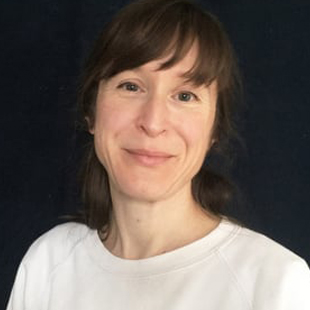
ALINE HELMCKE (Germany)
Lines ahead! Sequential Image Making Practice in Drawn Animated Author’s Films
Drawing as an artistic form of expression is often being referred to as a spontaneous, simple and direct act where impulse, movement and drawing mark are closely related to one another. The practice of drawing for animated films, however, seems to oppose this in many ways, as the creation of an illusionary flow of moving imagery requires a systematic, thought-out approach: every line has to be placed in relation to its progression in time and space. Since the birth of the animated moving image, rules and techniques of how to set a drawing in motion have been developed, the most influential certainly being the so called “12 principles of animation” developed in the Disney Studios and described by Frank Thomas and Ollie Johnston. These rules aim at conveying the impression of a fluent and dynamic, a “believable” action and require a deep analysis of the respective movement. Moreover, they exert a strong influence on the visual appearance of lines and forms that shape our expectation of how an animation should “behave” on the screen. This raises the question whether author filmmakers perceive these rules as a helpful guidance or rather a restriction that can limit the freedom of the drawing process, leading them away from spontaneity and an individual approach to drawing and narrating a film. The presentation aims to give an insight into how contemporary author’s filmmaker develop individual animation strategies based on their respective drawing style, their use of tools, techniques and materials as well as their individual process of sequential image-making. It suggests that these aspects serve as vital elements that are also actively being used by the artists to develop and build the dramatic structure of their films.
Aline Helmcket is an artist, animation director and researcher with a focus on drawing and experimental animation. After studying Fine Arts at the University of the Arts Berlin and Animation at the Royal College of Art in London, Aline is teaching at university level since 2008. She was a lecturer for Drawing at the UdK Berlin and a senior tutor and guest professor for Animation at the Bauhaus University Weimar. Her moving image work has been shown both in exhibition and festival contexts nationally and internationally and received grants and scholarships from the DAAD, nordmedia and Deutscher Künstlerbund, amongst others. Aline is currently teaching at Kunsthochschule Weißensee while working on a practice-based Ph.D at the Film University Babelsberg KONRAD WOLF in Potsdam which examines author’s films as an experimental field of artistic expression in drawn animation.
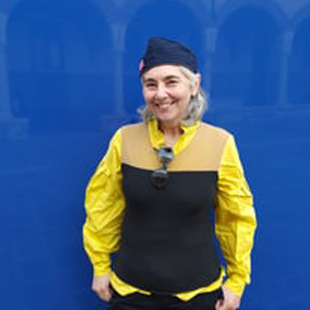
PAOLA BRISTOT (Italy)
All in Line
My research begins with the concept of the Line and its perception, following the formal principles of Gestalt and the specific characteristics that allow us to communicate through codes that belong to our perceptive abilities. These are the essential foundations through which we express ourselves and form the basis of writing represented in artistic visual languages, and certainly in animated cinema as well. I would first analyze ‘La Linea’ by Osvaldo Cavandoli, which I would like to associate with the work and reflections on the line by Saul Steinberg, to explore what was being sought in those years and how it provided increasing impetus for the development of poetic and evocative representations that the line possesses, being conceptually abstract but absolutely real in its expressive forms. I would then analyze Nedeljko Dragić’s film, ‘Dnevnik’ (Zagreb Film, 1974), because it allows me to showcase the varieties of signs and interpretations of linear characters and the expressive potential that is represented.
Paola Bristot (Aviano, 1961) graduated in 1985 in Discipline Arti Musica Spettacolo and in 1991 specialized in History Art in University of Bologna. She is professor from 1995 of History and Languages of Contemporary Art at the Academy of Fine Arts of Venezia and from 2020 in Centro Sperimentale di Cinematografia of Turin, also. Like president of the Viva Comix association organizes many exhibitions concerning comics, illustration, animation and visual arts. She is the Artistic Director of the Piccolo Festival Animazione since 2007. She curated the anthology “Animazioni“ in 6th voll. (2010-19, Viva Comix, Ottomani with A.Martignoni) where published more 100 short Italian films. Like art director produced the experimental film “Re-cycling” (Arte Video, Viva Comix 2014, and new version 2019). She is curator of the studiovivacomix in Pordenone where lives and works.
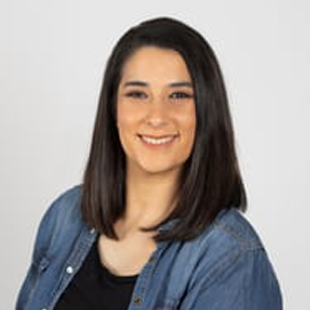
ADRIANA NAVARRO-ÁLVAREZ (Spain)
Violence as Discourse in Alberto Vázquez’s Animated Cinema
This study analyzes the use of violence as a narrative and graphic tool in the animated films of Alberto Vázquez, a key figure in contemporary independent cinema. The auteur constructs crude stories through a child-like visual style aimed at an adult audience. This contrast between the visuals and the script as an aesthetic resource generates uncomfortable tension, enhancing the impact of violent scenes while intensifying the denunciation of social issues. Vázquez’s works, based on this activist approach, result from a reflection on the contradictory and media-driven present. To this end, the methodological analysis focuses on three films based on various forms of violence: Psiconautas, los niños olvidados (2015), which implicitly addresses psychological violence, set in a post-apocalyptic universe marked by addictions, hopelessness, and the social alienation of its characters. Unicorn Wars (2022) uses physical violence and graphic crudeness to depict current themes, such as militarism, religious fanaticism, and the absurdity of war, through a bloody conflict between teddy bears and unicorns. In the short film Decorado (2016) – awaiting the feature film of the same title, which is scheduled to be completed in 2025 – violence takes on a philosophical perspective, which adds a new dimension to its graphic and narrative representation. Unlike the previous films, the violence is neither explicit nor physical, revealing the silent oppression of social structures and the weight of a conditioned existence. The use of violence in Vázquez’s animated films is a discursive resource that challenges the mainstream conventions and contributes to an incisive social critique. His ability to show it from a playful and disturbing perspective invites us to reflect on power dynamics, structural violence, and the contradictions of the human condition, thus consolidating Vázquez’s role as an unavoidable reference in the contemporary animation arena.
Adriana Navarro-Álvarez, PhD in Fine Arts, is an Assistant Professor under LOSU regulations at the Faculty of Communication Sciences at the University of A Coruña, Spain. She teaches Production Design for Animation and Videogames, and Animation Character Acting. She is a member of the Arte-Facto Research Group, focusing her research interests on the production of auteur-driven animated short films. Previously, she worked as an Assistant Professor of Animation at Volda University College, Norway. Her Master’s graduation short film, Vía Tango, was nominated for the Goya Awards.
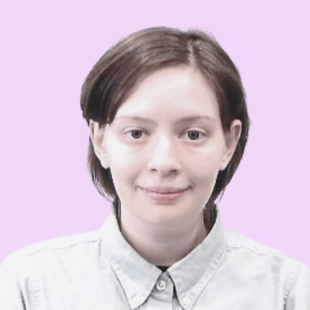
ESTHER BLEY (USA)
Queer Bashing: From Violence to Reclamation
This presentation will provide an overview about the history of queer bashing depicted in animation, and the reclamation of this violence. From Krazy Kat Goes A-Wooing (1916) depicting the dysfunctional relationship between Krazy Kat and Ignatz, to the vitriol expressed by the townspeople in Thank You Mask Man (1968), and the animated sequences of empowered trans women in The Stroll (2023). These works and others from around the world showcase the range of how violence has been intertwined with queerness.
The lecture focuses on three key aspects of the history of queer bashing:
1. Homophobia: covers the history of homophobic violence beginning in the 1910s, and how these depictions changed or remained consistent over time.
2. Transphobia: with roots stemming as early as the 1910s, the depiction of transphobic violence has shifted as visibility and language have evolved.
3. Reclamation: starting from the rise of independent animation in the 1980s, animated works began resisting and reclaiming harmful stereotypes. Primarily created by queer directors and queer artists, these works present a humanizing and often educational perspective of fighting back against queer bashing.
As animation evolved, so did its on-screen depictions. Each decade offers a unique insight into how society viewed the queer community during that period. This presentation showcases how animation serves as both a reflection of societal attitudes toward queer individuals and a medium for challenging those attitudes. Reclamation and resistance are especially important as they demonstrate that violence does not equate to silence but instead to strength and endurance.
Esther Bley is an archivist, historian, researcher, and a reference librarian at Hofstra University. Their online archive, Queer Animation, documents and preserves LGBTQ+ media throughout animation history. When not working on their database, they dedicate their time to writing. She contributes to her series, “The Cartoon Closet” for Cartoon Research, and her Substack, Queer Animation. Bley has conducted interviews with a variety of animation directors, including Ralph Bakshi, bringing important conversations about representation to the forefront. Currently, she is working on a book exploring queer representation in American animation.
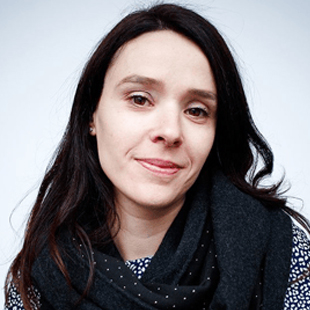
MARIE-JOSÉE SAINT-PIERRE (Canada)
Animated Testimonies: Documentary Animation as a Tool for Addressing Violence Against Women
Violence against women remains deeply entrenched in patriarchal power structures, persisting despite legislative advancements and feminist advocacy. This research examines how documentary animation contributes to the visibility of gender-based violence while ensuring ethical storytelling and victim protection. For survivors, sharing their experiences publicly can be retraumatizing and even dangerous, particularly in live-action documentary formats that may struggle to guarantee anonymity. Documentary animation offers an ethical alternative, visually representing trauma while safeguarding survivor identities and providing a space for testimony without fear of recognition or retaliation. Focusing on Survivors (Sofian, 1997), Repetition Compulsion (Lee, 1997), Passages (Saint-Pierre, 2008), Girl in the Hallway (Barnhart, 2019), Letter to Colleen (London, 2007) and Everything was life (Land, 2004) this study explores the artistic strategies employed in these films to depict violence. Through in-depth film analysis, the research examines how animation visualizes psychological trauma, translates lived experiences into evocative imagery, and fosters empathy in audiences. By blending personal testimonies with symbolic and metaphorical representations, these films create a powerful narrative space where survivors’ voices can be heard without exposing them to further harm. The methodology integrates a qualitative approach combining film analysis, feminist theory, and trauma studies. A content analysis focuses on visual metaphors, narrative structures, and animation techniques that convey the psychological aftermath of violence. A comparative approach contrasts animation with live-action documentary strategies to assess the effectiveness of different visual storytelling methods. Ethical considerations address how animation safeguards victim anonymity while ensuring authenticity in testimonial narratives.By demonstrating animation’s capacity to represent difficult subjects with sensitivity and impact, this research highlights its role as a vital tool for advocacy, education, and social change in the fight against violence. Through its ability to provide both protection and emotional resonance, documentary animation emerges as a crucial medium for amplifying survivor voices and challenging systemic silencing.
Dr. Marie-Josée Saint-Pierre is an internationally recognized animation filmmaker, professor, and researcher specializing in documentary animation and feminist film studies. She is an Associate Professor at Laval University in the School of Design, where she teaches animation theory and practice, feminist animation, and documentary animation. She is the author of the book Women and Film Animation (2024). Born and raised in Canada, Saint-Pierre has been active in the animation field since 2004, establishing herself as a leading voice in research-creation. Through her production company, she has directed, written, and produced several award-winning films that have been showcased in over 150 international festivals, earning her around 60 global awards, including two Jutra Awards, a Gemini Award, and a Canadian Screen Award. Saint-Pierre’s work is characterized by a hybrid approach to documentary filmmaking, blending traditional documentary storytelling with experimental animation techniques. Her acclaimed filmography includes Passages (2008), McLaren’s Negatives (2006), Jutra (2014), and Femelles (2012), among others. Her films not only challenge conventional documentary aesthetics but also push the boundaries of testimony and memory representation in animation.
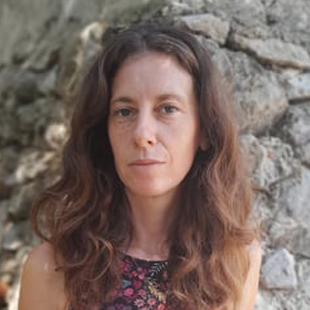
MINA SABLIĆ PAPAJIĆ (Serbia)
Violent Women – From Symbolic to Physical Violence: The Evolution of Female Brutality in Popular Animation
Throughout the history of popular animated films and series, female characters have undergone a profound transformation. From passive heroines and victims to (hypersexualized) superheroines and villains who rely on manipulative tactics such as sexuality, magic, and deceit, their portrayals have continuously evolved. In recent decades, however, female protagonists have begun to employ direct and brutal violence. These changes not only reflect shifts in social norms and gender roles but are also shaped by the increasingly diversified market for animated content, as audience demographics and industry strategies continue to evolve. Through the shifting of boundaries within traditional genres and the subversion of the stereotype that only male characters can be legitimate wielders of power and violence, there is an effort to create more realistic depictions of women that reflect the diversity of the real world. At the same time, particularly within the animated medium, this process also opens the door to the development of hybrid, often fantastical female identities that may embody utopian or feminist explorations of gender and power. The first part of this presentation will explore the spectrum of female protagonists in animation who engage in violence: superheroines, villains, antiheroines, warriors, and others. This typology will be examined through both Western and Eastern animation, focusing primarily on the narrative and emotional justifications for their actions—self-defense, revenge, protection of the weak, rage, despair, and more. Building on this framework, the second part will analyze different types of female characters in the animated series Arcane (2021-2024), which exemplifies a shift from traditional portrayals of women toward their representation as “legitimate” wielders of force. Given that this trend extends to live-action cinema, the discussion will also consider how the animated medium uniquely aestheticizes violence and shapes its impact. Finally, this presentation will address key questions: How is female violence visually constructed in animation through color, line, and movement? To what extent is it aestheticized versus realistically depicted? Must female violence always be narratively justified—and if so, why?
Mina Sablić Papajić is screenwriter and dramaturge. She is a teaching associate at the Animation department at the Faculty of Applied Arts in Begrade. She works as a program editor and selector of European Animated Film Festival Balkanima. Mina is associate screenwriter for two professional animation studios based in Belgrade (To Blink Animation, Spring Onion). She is a member of the Association of Drama Artists of Serbia (UDUS).
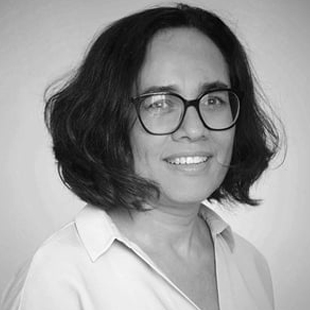
CAROLINA LÓPEZ CABALLERO (Spain)
I Raise My Voice: Representation of Institutionalized Violence in Ibero-American Animation
When La casa lobo (The Wolf House, 2018) entered the festival circuit, it stood out for its unique aesthetic and thematic approach. Chile, a country with little tradition in animated filmmaking, produced an experimental feature that not only expanded the artistic boundaries of the medium but also exposed the existence of a sect led by German fanatics. Inspired by the Colonia Dignidad case, La casa lobo presents itself as a fairy tale designed to indoctrinate its followers, using unsettling stop-motion techniques to reflect psychological manipulation. Later, Bestia (2021) by Hugo Covarrubias, an Academy Award nominee, further explored institutionalized violence under Pinochet’s regime. The protagonist, portrayed in stop-motion with a porcelain-like texture, is based on Ingrid Olderock, a former Nazi and secret police agent who tortured and persecuted political dissidents with the aid of her German Shepherds. Animation has proven capable of addressing highly sensitive subjects, engaging the audience on a fundamental level without relying on the distressing impact of certain live-action images that sometimes distract us from the true horror. Is Chile the only country where institutionalized violence has been represented through animation, given the prevalence of authoritarian regimes across Ibero-America? Does animation provide a space of its own to innovate in the ways it denounces such violence? How does animation visualize trauma and repression in ways that live-action cinema may struggle to achieve? With the rise of animation in the region, has this medium effectively addressed these collective traumas? Does Ibero-American animation have distinctive narrative, aesthetic, and technical characteristics in its representation of violence in animation? This presentation examines how 21st-century animated works address these questions on the representation of institutionalized violence in Ibero-America, exploring their artistic, social, and historical impact on the construction of collective memory.
Carolina López Caballero holds a Licentiate in Fine Arts from the University of Barcelona and a Degree in Animation from WSCAD/UCA (Farnham, England). She is a professor at CITM-UPC and a Ph.D. candidate at UPF, focusing on animation studies. Her writings appear in books, newspapers, and magazines, and she frequently lectures at universities, museums, and festivals. As Artistic Director of Animac Lleida and curator at Animario Madrid, she plays a key role in promoting animation. Her curatorial projects include Metamorphosis (CCCB, La Casa Encendida) and From Doodles to Pixels (MoMA, 35+ venues). She has served on juries for Annecy and Ottawa and is a consultant-curator for ICEX’s Animation from Spain.
Organisers:
World Festival of Animated film – Animafest Zagreb
ASIFA Austria
Hulahop Film & Art Production
Organising committee:
Daniel Šuljić, MA, World Festival of Animated Film – Animafest Zagreb
Franziska Proska, PhD St. Pölten University of Applied Sciences / AG Animation Vienna
Nikica Gilić, PhD, Prof., Faculty of Humanities and Social Sciences, University of Zagreb
Prof. Holger Lang, Webster University
Prof. Hrvoje Turković, PhD, Prof. (retired), Academy of Dramatic Arts, University of Zagreb
Andrijana Ružić, Independent Scholar, Università Statale di Milano
With support of:
Croatian Audiovisual Centre
Zagreb Tourist Board
City of Zagreb
Croatian Film Authors’ and Producers’ Association
AG Animation / Society for Media Studies
St. Pölten University of Applied Sciences


